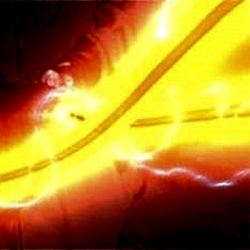
Wire Primary First, Test
Once everything is configured properly, and we’ve triple-checked to be sure everything is in redundant mode, we will wire up the primary network side and make sure that all works. The system will function just fine on just the primary network, and this is the time to mount all stage racks to consoles, make sure signal is flowing between devices and the system is functioning as expected.
If everything checks out with just the primary network connected, then it’s time to connect the secondary network. If everything was configured properly, nothing should happen. If the system freaks out when you plug in a device’s secondary port, you have the streams crossed somewhere. At that point, disconnect the secondary, power cycle everything and check your settings again.
Once you get everything working with both networks, you can test the failover by pulling the primary from one device. Audio should keep on flowing and stay working when you plug primary back in.
Label Well
The take-away for us on this install was to make sure everything was labeled well once we got it all working. We further hosed ourselves during trouble shooting by accidentally plugging a primary port into a secondary switch.
I didn’t do it for that install, but in future ones, I will even use different colors for the Cat-5e cables and patch cords to make sure the two networks stay separate. And I’ll standardize on those colors so as we build networks all over the country, we will always know what is primary and secondary.
It’s Not That Hard, Just Different
I know a lot of people are afraid of the digital network revolution in sound systems. It’s true that when we used big copper snakes, it was a little easier to troubleshoot things like bad cables and improper patches.
However, we still had to make sure the system was wired correctly with regard to polarity. We still had to pay attention to power and grounding. The transition between balanced and unbalanced connections still had to be handled properly. There were plenty of places for things to go horribly wrong. The biggest difference was we could typically physically see the problem.
In the networked world, we can have problems that we can’t physically see. The problems can exist inside a switch and it takes a different set of troubleshooting skills to figure it out. But it’s not really all that hard once you do it a few times and get some basic knowledge of the system.
Yamaha actually has some great information on setting up network systems and switches, and I highly recommend you check it out before you set up your first Dante network. This post is not meant to be an exhaustive guide, just an overview.
It’s a brave new world out there, folks. I’ve been saying for a few years that our job as technical artists will involve a lot more network skills. Now is the time to beef up that skillset!
Mike Sessler has been involved with church sound and live production for more than 25 years, and is the author of the Church Tech Arts blog. Based in Nashville, he serves as project lead for CCI Solutions, which provides design-build production solutions for churches and other facilities.
